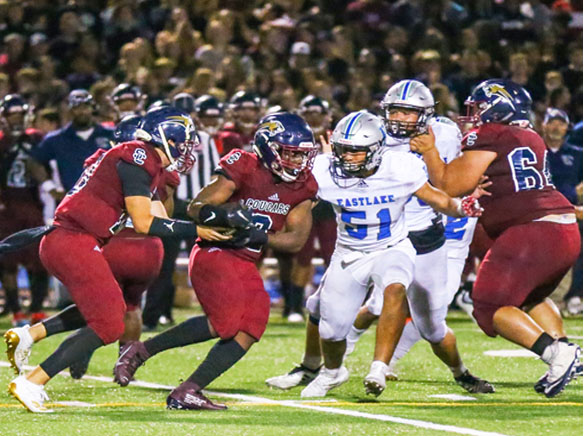Nothing is certain as society navigates the current COVID-19 pandemic. That seems to include when — and if — high school and youth sports will return to the playing field.
Just when it seemed the State CIF Office and its 10 member sections had finalized a contingency plan for a return to play, the California Department of Public Health delivered a gut punch.
State CIF Executive Director Ron Nocetti and the state’s 10 section directors have to hope it’s not a KO punch for what remains of the 2020- 21 interscholastic season.
The State CIF Office issued an initial blueprint for a return to play in late July by placing sports into Season 1 and Season 2 categories while pushing the start of play to 2021. Season 1 sports were scheduled from January to April while Season 2 sports were scheduled March through June.
The State CIF Office issued an updated blueprint for a return to play on Nov. 30 in which it canceled all state playoffs for Season 1 sports in a bid to push the calendar back to accommodate completion of regular season play.
It came as a result of the CDPH failing to update its guidelines for a safe return to play for youth sports. The CDPH said at the time it didn’t expect to release an update of guidelines until after Jan. 1.
As a result, the San Diego Section imposed a freeze on the start of Season 1 sports less than two weeks before high school teams were set to start practices.
But the CDPH threw everyone a curveball when it released its updated guidelines on Dec. 14 based on the current tier assignment for each county and the risk profile for each sport.
The guidelines may seem intolerable to many, but in light of virtually all of the state residing in the most restrictive Purple Tier, it’s encouraging that any sports have received a blessing to move forward.
The CIF’s Season 1 lineup of traditional fall/winter sports included badminton, cross country, field hockey, football, gymnastics, traditional competitive cheer, girls volleyball and water polo.
However, only cross country, golf, swim and dive, tennis and track and field are permitted under the CDPH’s most restrictive Purple Tier risk assessment.
Swim and dive and track and field are traditional spring sports, so they would require a switch in seasons to start participation on Jan. 25, the date the CDPH announced as the start for all athletic competitions.
San Diego Section commissioner Joe Heinz said he was grateful to receive some clarification from state health officials.
“We were pleased to see that our state will finally begin to allow athletic competitions to be held at both the youth and high school levels,” Heinz said in a memo to section leaders. “The sport-specific guidance provided aligns each of our sports with a risk profile that is then paired with the tier assignments found within the state’s blueprint for a safer economy. Overall, the guidance provides us with information on which sports can begin athletic practices and competitions based on the current tier assignment of their county.
“While this information is vital to our mission of returning high school sports to the San Diego Section, I would also be remiss if I didn’t add that the guidance does not align with the thorough and thoughtful plans submitted to the California Department of Public Health earlier this fall by our state CIF health and safety committee.
“Our executive director, Dr. Ron Nocetti, CAA, Ed.D., has committed to continue to meet and collaborate with the leaders of the CDPH with the hope of making an adjustment to the state’s current guidance to allow additional sports to have their tier assignments adjusted to enable more competitions to begin at the purple and red tiers. The student-athletes, coaches, athletic administrators and parents of the San Diego Section have waited patiently for their opportunity to get back into the athletic arena and we are committed to do all we can to make that happen.
“We undoubtedly have numerous obstacles that must be overcome in order for the section to return our student-athletes to the competitive arena that has been absent since early March of 2020,” Heinz said. “We know how important this is to all our stakeholders and we will continue to put all our efforts into turning this goal into reality.”
Education-based athletics is obviously facing a new normal.












